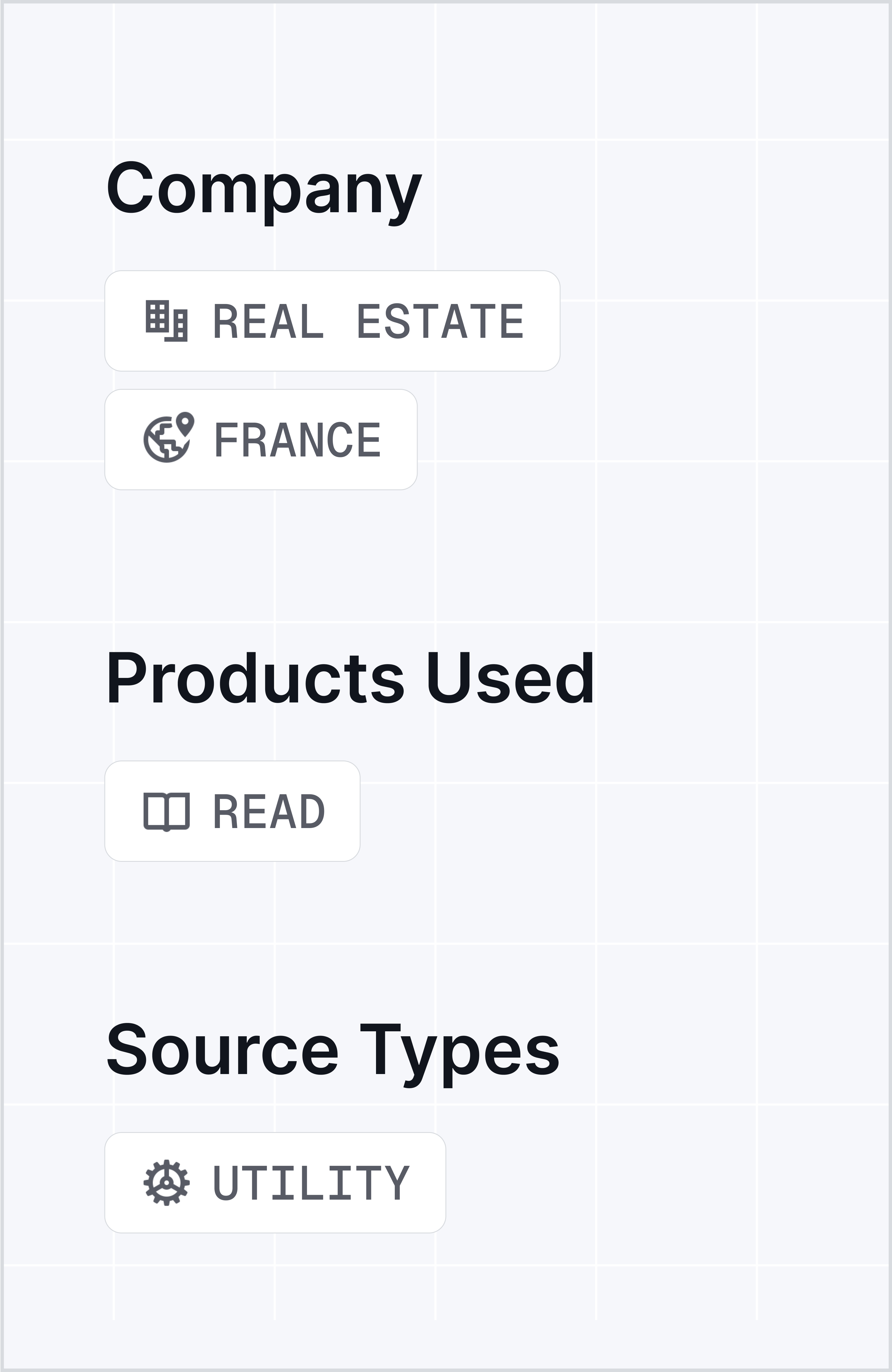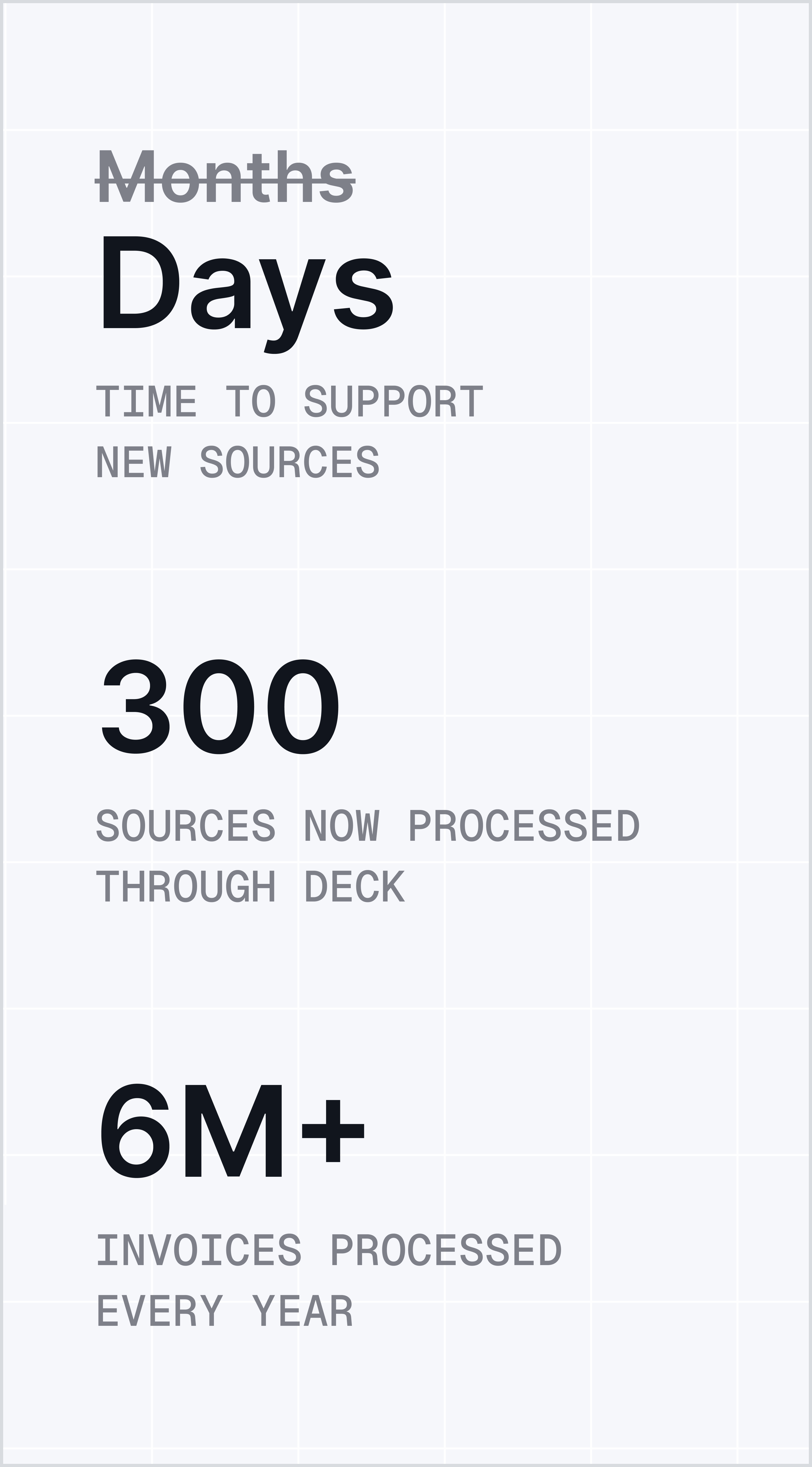Case Study

Deepki reduces time-to-live on complex sources from months to days, with Deck
Deepki partnered with Deck to scale global data coverage, speed up new source onboarding, and stay ahead in sustainability intelligence — without adding headcount.
Deepki is the most trusted sustainability solution for real estate. Its comprehensive platform enables real estate owners, investors, and occupants to manage risk through data-driven insights, improve the sustainability and financial performance of their assets, and meet growing investor expectations and regulatory requirements. It also supports clients in developing clear action plans for both transition and adaptation while delivering positive financial outcomes.
Deepki’s customers don’t care about portal mechanics; they care about actionable, trustworthy, audit-ready data to make strategic decisions. By pairing Deepki’s in-house strengths with Deck’s AI Agents for the long tail, the team scales coverage, maintains quality, and brings to market an unmistakably AI-enabled product experience—exactly where customers expect it today.
The result is faster time-to-live on complex sources, stronger coverage in difficult regions, and a product story that feels unmistakably AI-enabled to deliver a better experience — all without pulling engineers off the roadmap. This allows them to focus on what matters: developing cutting-edge features that enable clients to minimize risk and maximize value.
Challenge
Deepki monitors the sustainability performance of over €4 trillion in real estate assets under management (AUM) through its platform across 80+ countries. Historically, their teams built and maintained their own scrapers to protect quality and control. As the company accelerates expansion into new markets, three pressures have intensified:
- Breadth vs. bandwidth: New sources span regions and provider types; onboarding internally could take months and required recurring maintenance whenever portals changed.
- Hard access problems: Many portals deploy CAPTCHAs or anti-bot defenses that stall traditional approaches.
- Decision-grade bar: Any solution had to preserve auditability and reliability because the data informs high-stakes portfolio decisions.
“Keeping up would have meant doubling headcount every year — not viable — so we began evaluating partners with proven ways to fetch bills from difficult portals. The Deepki platform exists to improve efficiency and give our clients the bandwidth to focus on strategic issues. This is exactly what we are practicing in-house.”
— Tony Sarkis, Senior Operations Manager, Deepki
Build vs. Partner: A Data-Driven Vetting
Deepki compared build vs. partner on key factors:
- Man-days per connector (by complexity tier), plus recurring maintenance windows.
- Annual document volumes and per-document economics to identify a long-tail threshold where partnering wins.
- Proof-of-concept outcomes on difficult portals (including CAPTCHA-heavy regions) and measured time-to-live from credentials to first data.
Conclusion: Keep important, high-volume pipelines—where Deepki’s internal expertise shines—in-house; outsource the long tail, where breadth, speed, and portal hostility make Deck the smartest choice.
Solution
Deck’s AI Agents take on the messy, portal-level work so Deepki can focus on product and analytics. In practice:
- Long-tail acceleration: New, low-to-medium-volume sources moved from months to days to go live—meeting customer timelines without continuously scaling headcount.
- CAPTCHA capability: Agents reliably navigate CAPTCHA-protected portals, unlocking previously blocked sources.
- Hybrid by design: Deepki integrates once and routes target sources to Deck where fit is strongest, while core, high-volume connectors remain internal.
Results
Speed where it matters
The time-to-live for complex, niche sources dropped to days, helping Deepki deliver coverage fast without derailing its roadmap — or having to grow its headcount.
Competitive in difficult markets
Consistent access to CAPTCHA-heavy portals turned formerly blocked sources into standard coverage, strengthening win rates where “can you actually fetch this data?” is the deciding question.
Economic clarity
A clear outsourcing threshold emerged. Deck is the most efficient choice for the long tail (~300 sources), while Deepki keeps very high-volume pipes in-house — aligning per-document economics with the reality of ~6M invoices per year.
Collaboration
The accessibility and hands-on support of Deck’s team stood out for Deepki. The relationship started with a learning curve on both sides — new APIs, evolving documentation, and teams getting used to working together. Once a weekly cadence and a shared channel were in place, momentum shifted: integration complexities were surfaced more quickly, the right experts jumped in fast, and source activations became predictable.



